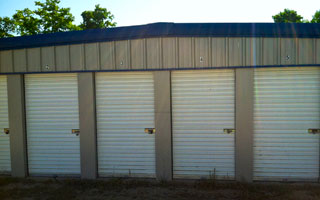 Downsizing is occurring all around us for a myriad of reasons. Boomers are retiring and looking to simplify, families are choosing award-winning school districts over square footage, and former McMansioners reeling from heating and cooling costs (not to mention taxes) are opting for smaller spaces.
Downsizing is occurring all around us for a myriad of reasons. Boomers are retiring and looking to simplify, families are choosing award-winning school districts over square footage, and former McMansioners reeling from heating and cooling costs (not to mention taxes) are opting for smaller spaces.
Divorce, a shorter commute, being closer to family… the reasons behind a downsize are many, but the actual act of downsizing has one looming common factor. It’s hard.
Whatever the reason for your downsize, packing up a life can be challenging, both physically and emotionally. Throwing away the treasures you’ve worked so hard to accumulate and offering up cherished souvenirs to friends and loved ones only to find they’d rather have your flat screen TV, can be downright heartbreaking. Walking away from the first home you bought with your spouse, the house in which you rocked your newborn babies, and the site of many a memorable Thanksgiving dinner can be fraught with emotion. So how does one do it? How does one go about the business of dismantling a life that may have taken decades to build?
You may expect this Type A Queen of Lists and Schedules to tell you to start by “Getting Organized.” But I’ve come to learn that there’s something far more critical to beginning this often-painful process. It’s to consciously acknowledge, and to keep at the forefront of your mind, that you are not actually packing up a life; you are packing up the stuff you’ve collected in this chapter of your life. Surrounding yourself with positive reminders of all the great things in the new chapter of your life can be a source of great strength. So rally the grandkids for much-needed packing breaks at the playground and schedule some fun dinners out with close friends. Tack up some visual reminders of positive things the downsize will bring; the family dinners you’ll finally be home for thanks to a shorter commute, the events calendar for your child’s new school, or brochures for trips you’ll be able to take once you’ve traded the cumbersome house for the turnkey condo. Getting – and keeping – yourself in a positive state of mind is more than half the battle in this kind of a move.
Then, once all the benefits of downsizing have been firmly ingrained in your daily mantra, yes, you should absolutely Get Organized! Before you’ve packed a single box, get ahead of the game and schedule your residential movers (they book up quickly during the high-volume summer months), research local storage options if you have a gap between leaving one home and moving into the new, and make a list of all the tasks you’ll need to complete before the big moving day. Taking charge and planning your move on paper serves several functions. It can give you a sense of control over an often emotional situation and help you to see just how much work actually needs to get done – and how much help you might need to do it. Also, checking things off your list as you move through the process can provide some sense of accomplishment, rather than just a sense of impending doom at leaving your home behind.
 When the time comes to begin cleaning out closets, sorting things, and deciding what to keep and what to give away, start with the good stuff. Though it’s tempting to keep the rooms you use most often intact as long as possible, these are the rooms that typically house the items you’ll most want to take with you, pass along to family members or friends, or quality items that you can sell. So rather than begin by packing up the attic or cleaning out the basement, start by cataloguing the items you use and see everyday. Even if you don’t pack them away in a box yet, physically touching each item in a room and its cupboards and making yourself label it as a keep, giveaway, or toss, will give you a true sense of how many things you can take with you versus how many items you’ll need to give away or consign. Beginning in your main rooms will also allow you to make the tough choices about keeping or parting with your best items while you’re still fresh, rather than wasting that energy on trying to find a home for a basket that’s lingered in your attic for years. Because, believe me, no matter how well you prepare yourself, by the end of the sorting & packing, you’ll be physically and emotionally drained and ready to toss it all. Avoid impulsively parting with things you may regret giving away by tackling the rooms you use most first.
When the time comes to begin cleaning out closets, sorting things, and deciding what to keep and what to give away, start with the good stuff. Though it’s tempting to keep the rooms you use most often intact as long as possible, these are the rooms that typically house the items you’ll most want to take with you, pass along to family members or friends, or quality items that you can sell. So rather than begin by packing up the attic or cleaning out the basement, start by cataloguing the items you use and see everyday. Even if you don’t pack them away in a box yet, physically touching each item in a room and its cupboards and making yourself label it as a keep, giveaway, or toss, will give you a true sense of how many things you can take with you versus how many items you’ll need to give away or consign. Beginning in your main rooms will also allow you to make the tough choices about keeping or parting with your best items while you’re still fresh, rather than wasting that energy on trying to find a home for a basket that’s lingered in your attic for years. Because, believe me, no matter how well you prepare yourself, by the end of the sorting & packing, you’ll be physically and emotionally drained and ready to toss it all. Avoid impulsively parting with things you may regret giving away by tackling the rooms you use most first.
As you move through your home in the sorting and choosing phase, give yourself four categories for things: Keep, Throw Away, Donate, and Boutique. The “Keep” items are obviously things you’ll move to your new home or into self storage if your new space isn’t immediately ready. The “Throw Away” category is self-explanatory, as is the “Donate” pile, while the “Boutique” items are things you would like to pass along to family members and friends or try to sell. If, after letting friends and family “shop” your boutique and/or trying to consign things, you ultimately move even more to the Donation pile, always remember just how much use someone else will get out of your old things. Though it can be hard to see those close to you turn down your generous offer of a dining room table or rug you thought they’d always admired, as one whose home is furnished with mostly second hand rummage sale finds, I can assure you firsthand just how grateful someone will be to find your cast off sofa at the local Goodwill.
When the last box is packed, the last trip to the dump made, and the local movers are carrying your furnishings into the truck, try to remember that you’re leaving a house behind, not the memories you created in it. Spoken like a girl who’s never had to do it herself, I know.
Kitty Burruss is an interior designer, wife, mother, and author of the decorating blog www.WestchesterDecorator.blogspot.com.






